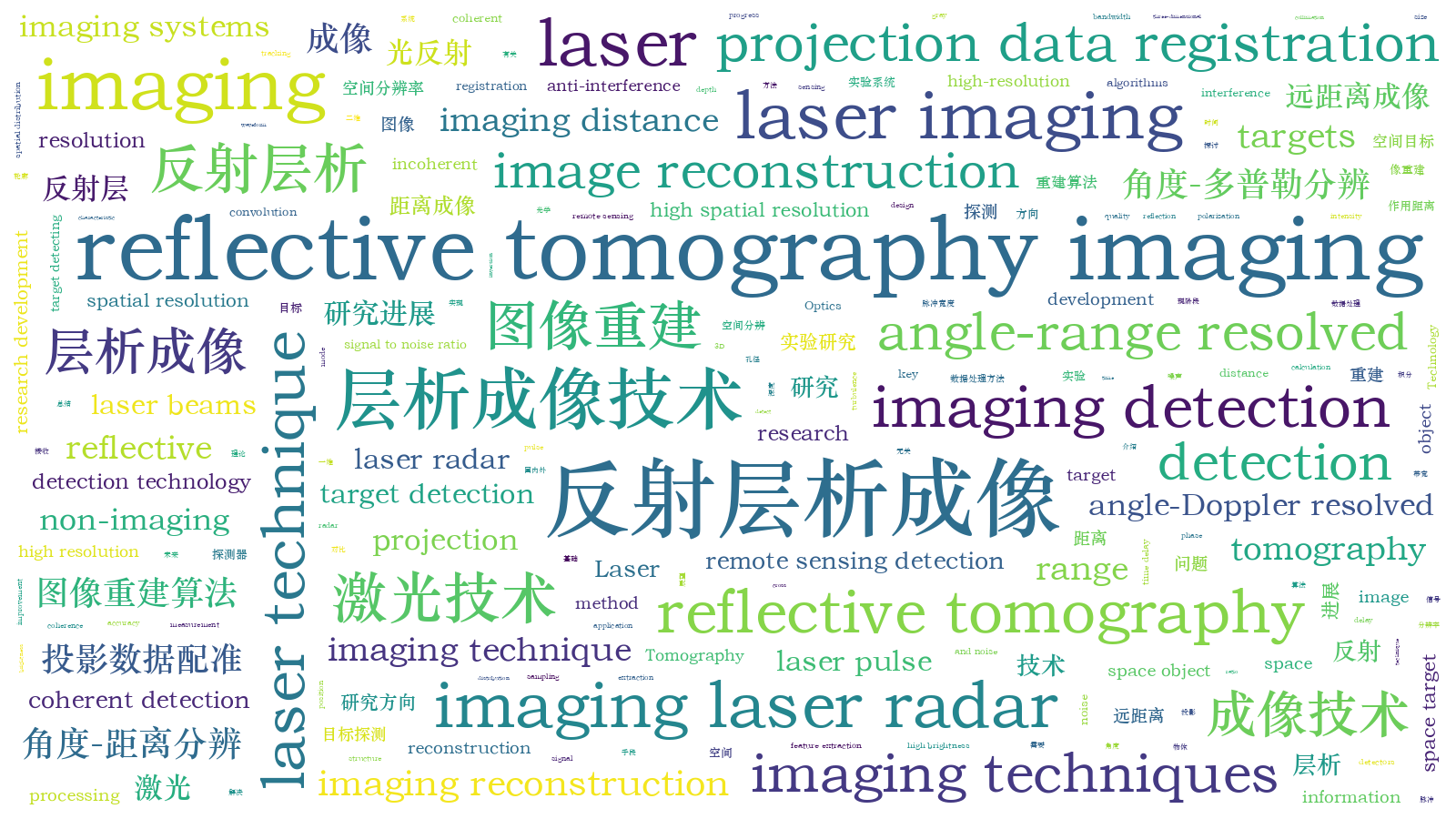激光反射层析成像技术的研究进展  下载: 1815次内封面文章特邀综述
下载: 1815次内封面文章特邀综述
Significance Laser has been widely used in the production and living of human. In remote sensing detection field, using laser to detect targets is probably the most precise method for perceiving the appearance of long-range targets at present. This is because laser is characterized by its high brightness, high collimation, and strong coherence. It can actively, real timely, and precisely acquire the three-dimensional (3D) information of the detected targets.
Laser imaging detection is a target detecting method applying laser beams as detection media, which are radiated to illuminate targets in the first place according to certain spatial distribution law. Then, the data including time delay, intensity, waveform, phase, and polarization of laser echoes reflected from the detected targets are collected. After being processed, these data are presented in images. Finally, feature extraction and object inversion, to obtain the information of targets, including distance, position, reflection attribute, structure size, and motion feature, are conducted based on the images. By doing so, targets are found, identified, and confirmed. This technology can provide the information, including the range images, gray images, and feature images of targets with high resolution that cannot be obtained using general imaging methods. In addition, the laser imaging detection, characterized by high-resolution, high-measurement accuracy, anti-interference ability, and strong anti-shadowing ability, is especially suitable for the detailed detection of targets.
Due to its many advantages such as high spatial resolution, strong anti-interference and so on, laser imaging has attracted more and more attentions in the field of space object surveillance and identification. One of the most promising laser imaging methods is the laser reflective tomography imaging, introduced by Parker, Knight, and Matson et al. According to the provided signature, it can be divided into range-resolved, Doppler-resolved and angle-angle-resolved. Range-resolved reflective tomography imaging technique can be used to obtain cross-sectional image of objects that is angularly unresolved while the data are range resolved, so it is especially applicable for an object that is not rotating fast enough. Meanwhile, it can be realized in both coherent and incoherent detection systems, considering that the Doppler-resolved and angle-angle resolved can only be used in coherent detection systems. When it is realized in incoherent detection systems, it has the characteristic that its spatial resolution is not related with the imaging distance but related with laser pulse-width, bandwidth of detectors and noise, and is also insensitive to turbulence.
According to the published documents, various research institutes at home and aboard, have taken studies on the laser reflective tomography imaging, mainly including Massachusetts Institute of technology Lincoln Laboratory, U.S. Air Force Phillips Laboratory, Swedish Defense Research Agency, Shanghai Institute of Optics and Fine Mechanics, National University of Defense Technology and Space Engineering University. Especially, Charles L. Matson from Air Force Phillips Laboratory, has conducted the first satellite feature reconstruction by use of range-resolved reflective tomography techniques from non-imaging laser radar data collected on an orbiting satellite. Many corresponding advances have been achieved. But there are still many problems need to be solved in terms of practicality and the improvement of reconstructed images quality. Hence, it is necessary to summarize the existing researches to guide the future development of this field more rationally.
Progress The progress of methods, and research development in the field of laser reflective tomography imaging techniques are summarized. First, the requirement of projection sampling, the resolution of reconstructed images, signal to noise ratio calculation, the projection type which can be used to reconstruct image, and the application mode of are introduced. Second, the processing methods of projections are summarized according to previously reported studies. Considering the effects on the reconstructed image, the processing of projection can be divided into projection registration and projection de-convolution. Xiaofeng Jin's research group from Shanghai Institute of Optics and Fine Mechanics, Chinese Academy of Sciences, has studied on and putted forward feature tracking method for projection registration (
Conclusion and Prospect Laser imaging is of great importance for long-range space target detection. In order to well applicated in space target detection, the technology of laser reflective tomography imaging still needs in-depth, engineering and practical explorations to promote the development of the long-range laser imaging detection technology in engineering aspects.
胡以华, 张鑫源, 徐世龙, 赵楠翔, 石亮. 激光反射层析成像技术的研究进展[J]. 中国激光, 2021, 48(4): 0401002. Yihua Hu, Xinyuan Zhang, Shilong Xu, Nanxiang Zhao, Liang Shi. Research Progress of Laser Reflective Tomography Techniques[J]. Chinese Journal of Lasers, 2021, 48(4): 0401002.







